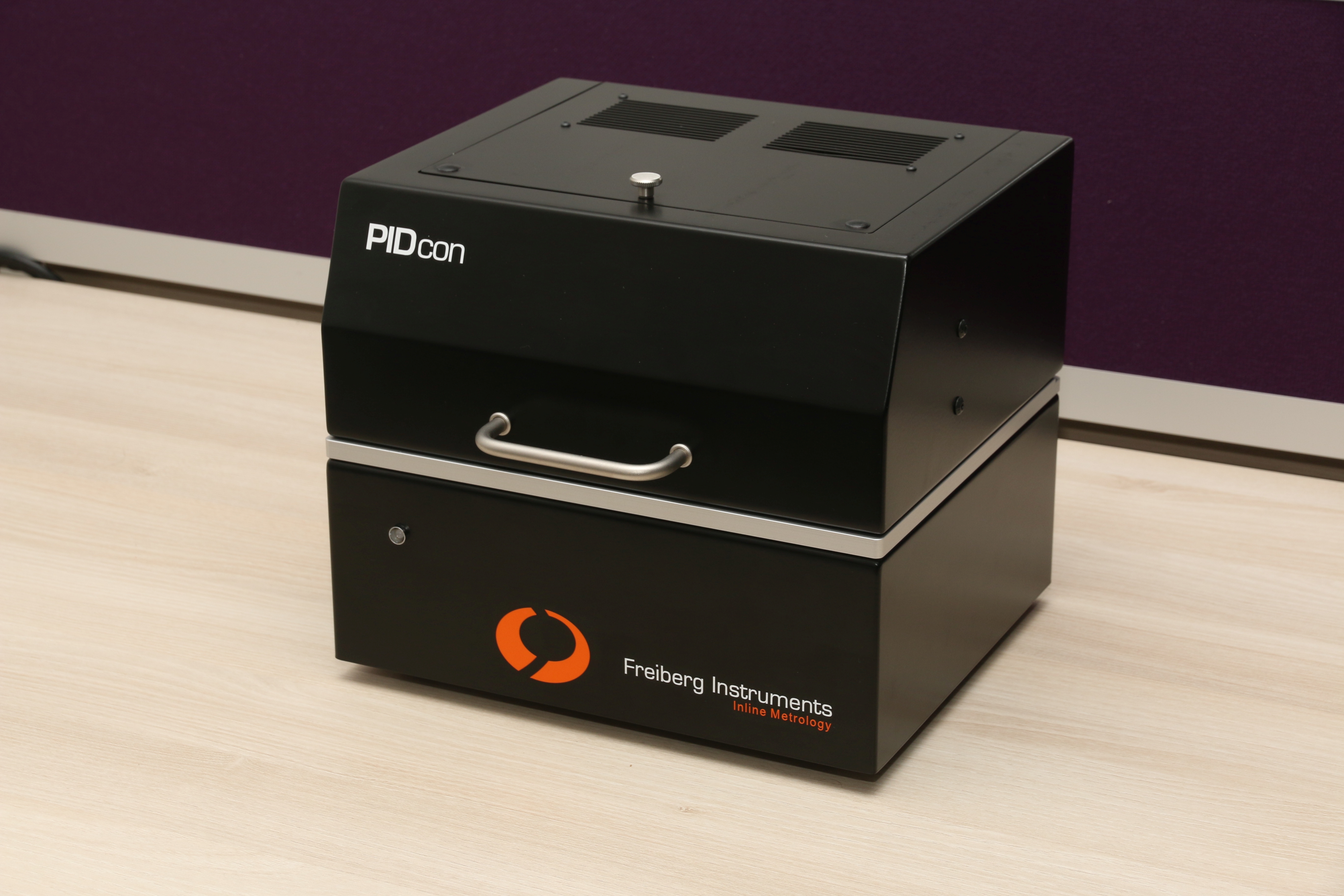Test device detects the PID effect at cell level – Fraunhofer CSP nominated for the Intersolar Award
The PIDcon test device developed by the Fraunhofer Center for Silicon Photovoltaics CSP is nominated for the Intersolar Award 2015. The device can be used to detect potential-induced degradation (PID), one of the most frequent causes of power losses in photovoltaics modules with crystalline silicon solar cells, at solar cell level and thus far more quickly and easily than before – an enormous advantage for quality control. The innovation prize will be awarded on 10 June at the Intersolar trade fair in Munich.
PID occurs above all, when solar modules are operated at high system voltages and in a damp environment. At the Fraunhofer CSP it was possible to elucidate the physical principles of the defect mechanism. It was found: Tiny defects at nanoscopic level are the reason why power losses through to total failure can occur in large solar modules.
As the researchers in Halle detected, crystal defects in the silicon cause the short-circuits (shunts), which occur with PID. These crystal defects are called stacking faults and are only a few micrometers long and are only one atom layer thick. They become electrically conductive due to the penetration of sodium atoms, so that short circuits occur. Based on this fundamental understanding of the PID effect, a test method at cell level was developed and patented. Freiberg Instruments, as a specialist for industrial semiconductor metrology, further developed this test method to »industrial maturity« as a licensee.
»We are very pleased to be nominated for the Intersolar Award 2015«, said Professor Jörg Bagdahn, Head of the Fraunhofer CSP in Halle. »PIDcon is a classic example of the high level of material science expertise of the Fraunhofer CSP and the practical reference of our work: Based on fundamental material science investigations into the PID effect we were able to develop a test, which enables the degradation behavior to be assessed reliably at cell level and offers diverse possible uses. In Freiberg Instruments we have found a competent industrial partner, who now markets the method and the device worldwide.«
The device can be used to test solar cells or encapsulation materials in a simple procedure, with significantly less material, energy and work than in the conventional test method. This makes quality control and the production of solar cells and solar modules easier.
The method is especially characterized by the fact that it makes do without cost-intensive production of complete solar modules and their testing in especially operated climate chambers. Instead, individual unencapsulated solar cells are tested in the PIDcon and are exposed to the precise conditions under which PID takes place: increased temperatures and a high electrical potential between the glass surface and solar cell. To do this, the layer stack build-up of a solar module is simulated on the solar cell. In this way the PID effect can be provoked on a smaller area and the degradation measured in real time. The effect of different polymer encapsulation films or glasses on the PID resistance of solar modules can also be tested.
Demand on the market is high, said Dr. Kay Dornich, Managing Director of Freiberg Instruments. »The first devices have already been delivered to renowned companies and research institutes in Europe and Asia. With the PIDcon tester we offer solar cell manufacturers the opportunity to monitor the PID resistance of their cells during production. For module manufacturers, it is now possible to check the quality of supplier’s solar cells during the incoming inspection. In addition, in the companies’ research departments and in research facilities there is a need to use the PIDcon tester for the development of new cell concepts and for PID prevention strategies.«
